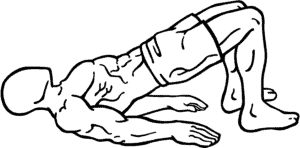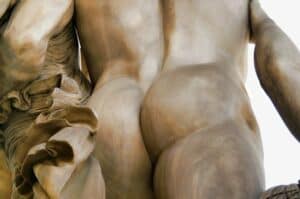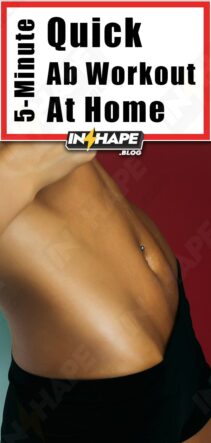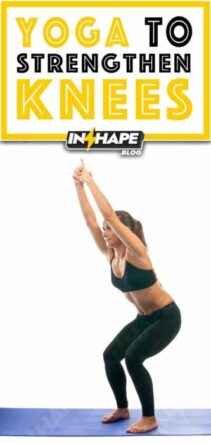On the way to a firm butt, glute bridge raises create your foundation for a lower body workout day. Whether weighted or not, hip lifts are the most effective tools that shape your glutes to look better than Kim’s. On your journey to a firm peach, learn the value of this exercise.
In 2021, the focus on building the perfect backside is no longer the priority of fitness models. These days, every girl is obsessed with her glutes. And let’s not limit ourselves to those gender stereotypes; men want a butt just as perfect!
And what do we do the first thing when such a desire strikes us? Squats, right? Wrong. This obsession with all kinds of squats has gone too far. It’s been the most advertised exercise for years. But squats alone will not build you a perfect round butt. Sure, this is a great compound exercise, but don’t put too much faith in them alone! This is just one of the many exercises to build up a perfect routine for a round butt. Diversify your regime and add different kinds of hip lift exercises such as glute bridges, hip thrusts, and different sorts of compound and isolated exercises.
The Effectiveness of Glute Bridges
Why Glute Bridges?
The posterior chain that includes glutes and hamstrings engaged during the glute bridge is responsible for stabilizing the pelvis and the hip. They are the powerhouse of your lower body. They are an essential tool for your daily functioning, overall physical performance, and injury prevention. In the weakened state, they put too much work on the back muscles and tighten hip flexors resulting in slouching and, possibly, nerve damage.
3 Bridge Pose Variations to Spice up Your Practice
The standard bodyweight bridges and all their variants engage the posterior muscles and strengthen the core.
If done right, this exercise comes with the following benefits
- strong muscles
- better posture
- increased flexibility
- reduces injuries
- deepens squats! (as you see, even the infamous squats benefit from glute bridges)
A 2015 study shows the effectiveness of glute bridges for decreasing back pain when combined with lower back stabilization exercises.
How to Do a Glute Bridge?
Several variations to the standard glute bridge exercise target the main three glute muscles, hamstrings, and engage the core. Different types put more emphasis on a certain area, though. All the variations are easy to include in a beginner workout routine.
Standard Bodyweight Glute Bridge
 This is the basis that will build the proper technique for the other variations and strengthen your glutes initially.
This is the basis that will build the proper technique for the other variations and strengthen your glutes initially.
- Lie down on your back.
- Bend your legs in the knees and place at shoulder width or a bit narrower.
- Push through the heels and lift hips up while keeping shoulders on the ground.
- Squeeze the glutes all the way up.
- Hold for one breath.
- Return to the initial position.
Tips: always remember to keep your spine nice and straight! Overarching may lead to back injuries by shifting the focus from the glutes. Better tuck your pelvis in a bit to keep your back straight.
Toes Up
This is a slight variation of the standard move. The technique follows the above-mentioned example, with the only difference of pointing your toes up and pressing solely through your heels. This variation isolates your glutes and hamstrings better.
One-Legged Blute Bridge
This one boosts up the intensity of your bridges. In-depth isolation of your legs will build the strength in your posterior on a much faster scale.
The technique follows the standard one but with one leg off the ground. There are a couple of ways on where to put the passive leg.
- Bent, ankle to knee. You can bend your passive leg, thrust the knee a bit sideways and put the ankle on the working leg’s knee. Requires hip flexor flexibility.
- High up and straight. This position is more demanding balance-wise. The leg is not as passive, requiring hamstring flexibility.
A 2017 study of hip bridge workout mentions that the substitution of the regular 90-degree knee flexion for the working leg to a broader 135-degree lessens hamstring activations and trains glutes more effectively.
Frog Bridge
- Lie down on the mat
- Place the bottoms of your feet together and open the knees wide (similar to a butterfly stretch)
- Thrust your hip up to form a straight line with your shoulders
- Pause at the top with knees still open.
- Return to the initial position.
Common Mistakes
To make those glute bridges work for you in the most effective way, master the proper technique. Avoid the following mistakes.
- Rushing through it. Take your time, feel the muscles, and learn the proper movement.
- Relaxed glutes. Keep your muscles engaged and squeeze those glutes all the way up and down and everywhere in-between.
- Hyperextension of the lower back. Remember to fix your lower back and don’t move it around. Do not overarch! Glutes and legs should do all the work.
These are the most frequent mistakes that not only bring the effort to the minimum but can also cause an injury.
Can I Use Weights?
When you master the technique and feel comfortable with bodyweight variants, it’s time to add a bit of weight to engage those glutes even more. Both barbell and dumbbell can be used for this purpose by placing them directly above your hips.
11 Best Butt Exercises to Do at Home
So, Is It the Same as Hip Thrusts?
 Another popular glute lifting exercise is hip thrusts. They are very similar to glute bridge workout, and a new fitness enthusiast can easily mistake the two. However, there are several differences that indicate one or the other.
Another popular glute lifting exercise is hip thrusts. They are very similar to glute bridge workout, and a new fitness enthusiast can easily mistake the two. However, there are several differences that indicate one or the other.
- Both types engage the same muscle groups. However, the bridge also involves hips, core, thighs better; thrust – gluteus medius and the quadriceps.
- During the bridge, shoulders stay on the ground; during hip thrusts – on the bench or a platform.
- Hip thrusts are usually strength exercises done with added weight. While the bridge can be done with a barbell, the bodyweight versions are widespread as well.
How to Hip Thrust
This is a basic hip thrust technique that engages your posterior and works those muscles to tone the perfect booty:
- Sit on the floor with your back to the bench (use a chair at home).
- Tilt back to place your shoulders on the bench.
- Bend your knees; legs at shoulder-width.
- Take your weights and place them just above your hips.
- Squeeze your muscles and push hips off the floor till the back is parallel to the floor. Keep your back straight!
- Pause for one breath and return to the starting position.
 Fact checked by
Fact checked by 

